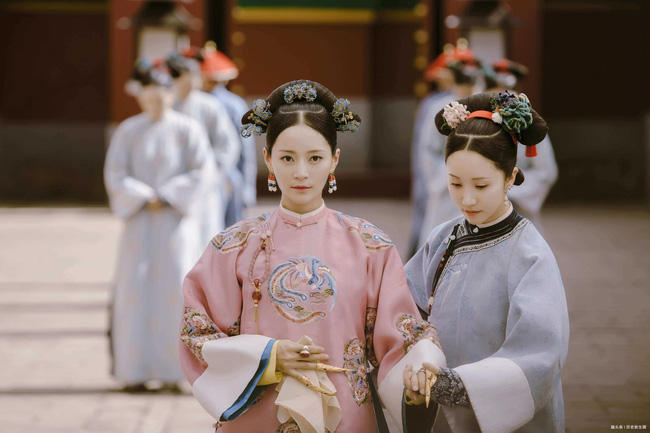The sight of concubines moving about the palace with attendants by their side to assist and support them is a familiar image often depicted in films. Because of this, many people believe that the way concubines walk seems somewhat peculiar. Is it that they lack the strength to move on their own, needing someone to support them at all times?
First, it must be noted that, after all, concubines are still considered servants to the Emperor and Empress, yet they hold a status significantly higher than many others. And with such nobility, they should not engage in any manual tasks. From eating and sleeping to combing their hair and applying makeup, concubines are
always attended to by palace servants with utmost care.

Having attendants by their side certainly exudes more authority.
In other words, in their daily lives, every action of the concubines is clearly understood by those around them. Due to their special status, they have people to do everything for them. Walking is also part of this ; compared to walking independently, having attendants by their side certainly conveys much more authority and presence.
Concubines strive to showcase their prestige among one another, gradually turning this behavior into a means of displaying nobility within the royal family.
During the feudal era, social hierarchies were clearly defined, so knowing how to walk gracefully, the qualities and status of the attendants allowed to support their masters became “knowledge” that concubines had to learn from a young age.
Thus, to modern eyes, having a whole entourage following and moving slowly, needing assistance, may seem quite strange. However, in that time, this was highly valued within the palace.
Besides demonstrating status and nobility, the aesthetics of ancient times also contributed to this particular way of walking. A significant factor was the famous foot-binding custom, which originated from the image of the three-inch lotus heel associated with the beauty of the renowned beauty, Zhao Feiyan.
To achieve the beautiful feet according to this aesthetic standard, many concubines accepted the deformity and unreasonable reduction of their feet to please the emperor, resulting in the inability to walk steadily like ordinary people. Therefore, having female attendants or eunuchs to assist them became a necessity in their daily lives, not merely for show.
By the time of the Qing Dynasty, although the practice of foot-binding had been abolished, the desire to appear beautiful and perfect in the eyes of the emperor still lingered among concubines. Thus, they always preferred to have attendants accompany them to display grace and delicacy.
Additionally, it is worth mentioning that Qing concubines often wore “flower-soled shoes”—embroidered shoes commonly seen in films. Flower-soled shoes are both high and difficult to walk in; just a slight increase in pace or encountering an obstacle could easily cause their wearer to fall. Therefore, to maintain the image of a modest woman, concubines typically required female attendants or eunuchs to assist them in walking.


















































